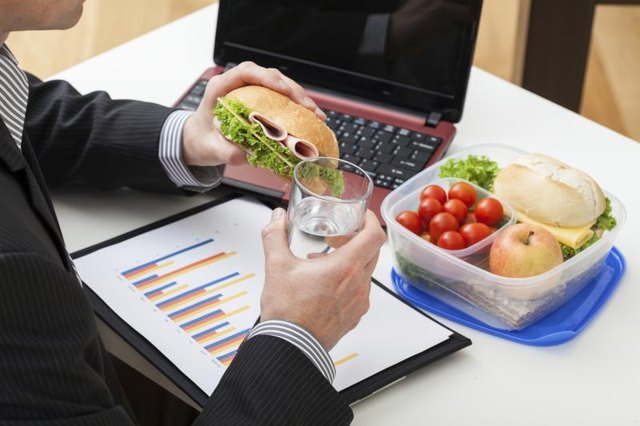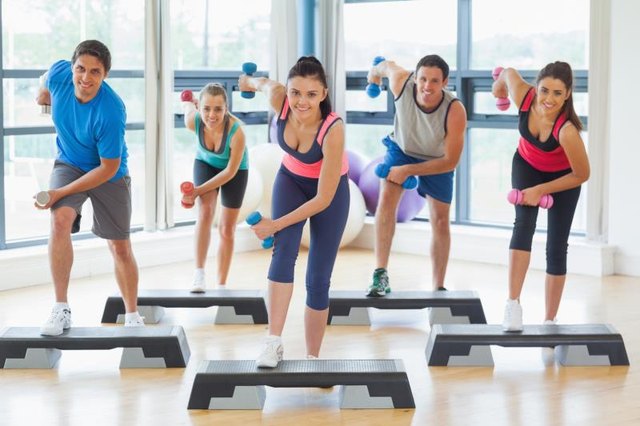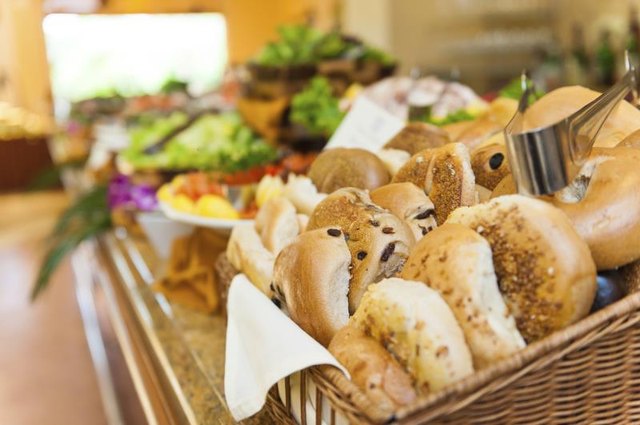SLEEP BY THE NUMBERS
A digit-by-digit guide to America’s snoozing ways
6.9 - How many hours the average adult sleeps per night
70 - The millions of people who suffer from chronic sleep loss or sleep disorders
23 - The number of minutes it takes adults to fall sleep on most nights
59 - The percentage of adults who know they snore (even if they deny it)
90 - The percentage of people who use electronics within an hour of bedtime
2.2 - The number of pillows most people sleep with a night
30 - The percentage of people who have purchased sheets in the past six months
35 - The percentage of people who don’t own bedroom curtains
265 - The millions of dollars people spend on OTC sleep aids a year
74 - The percentage of adults who drink at least one caffeinated beverage a day
Photo Credit iStockphoto
Overview
No matter how big that presentation is this morning, no matter how crucial your annual review is this afternoon, or how exciting that date will be tonight (ditto what happens afterward), the most important thing you will do today – and every single day – is sleep.
Yes, it’s that big of a deal. The quality and duration of your nightly sleep determines the quality and duration of your life.
It seems crazy: One third of our lives are spent sleeping. But those hours are far from unproductive. During sleep, our bodies repair muscles, consolidate memories, and release hormones and chemicals that regulate everything from energy to appetite.
“We are nothing but slaves to chemical processes,” says W. Christopher Winter, M.D., Medical Director at Martha Jefferson Hospital Sleep Medicine Center. They determine everything from great to poor health. And if you cut their work short, chances are you are setting yourself up for the latter.
From bedtime to rise-and-shine, here’s what those chemicals are doing in your body—and how they respond when you cut their work short.
The second you wake up in the morning, your body starts churning out a chemical called adenosine, Winter says. It builds up throughout the day and, come bedtime, it sends you packing for Sandman land. Meanwhile, your levels of neurotransmitters dopamine, serotonin, and norepinephrine fluctuate to keep you energized during the day and help you wind down at night. And as the sun sets, your brain’s pineal gland raises levels of the hormone melatonin in the body, signaling that sleep is near, according to Winter. Also, at this time, levels of the stress hormone cortisol should be at their lowest (granted you aren’t stressing over a morning meeting).
Finally, once you’ve closed your eyes for the night, a group of nuclei in the brain regulate the switch from awake to asleep, according to Winter. Your hippocampus, which is responsible for making new memories, shuts down and off to sleep you go.
IF YOU WAKE UP NOW: People with insomnia have a ten-fold risk of developing depression—and have 17 times higher anxiety levels—than those without insomnia, which is defined as having difficulty staying or falling asleep. If you wake up during this phase, say, from a loud noise or the feeling that you are falling, you probably won’t feel like you have slept because the first stage of sleep is so light. (For the record, that feeling of falling—or “the kick” as they called it in the movie Inception—is common and is caused by a sudden muscle contraction called a hypnic jerk.)
GET BETTER REST: To fall asleep easier, practice healthy sleep habits. That means no computer, TV, or tablets in your bedroom. Their lights can trick your brain into thinking it’s daytime and squash your oh-so important levels of melatonin. Winter says. Keep your bedroom cool, between 60 and 65 degrees Fahrenheit, to help your core body temperature drop, which helps induce sleepiness (your body temp drops slightly as you snooze anyway).
If you crave a midnight snack, make it almonds, a banana, or the tried-and-true milk (no, it doesn’t have to be warmed). All have chemicals that promote relaxation and will help you drift off more easily, Winter says. And remember that while alcohol might help you fall asleep (errr, pass out?), it won’t help you stay asleep: In a 2011 study from the University of Michigan Health System, researchers found that alcohol causes wakefulness throughout the night.
A QUICK NOTE ABOUT CATNAPS: They can help energize you midday, but shoot for around 20-30 minutes. No more. Otherwise you risk slipping into the deeper stages of sleep, which will make you wake up even groggier, Winter says. Don’t worry if you feel like you need a nap come 3 p.m. Siestas exist for good reason: Our circadian rhythms naturally make us sleepy at night and mid afternoon. Some brief shut-eye can up your body’s stash of cortisol, making you feel more alert, and even help reset your immune system, which can get thrown out of whack by fatigue, he says.
You spend a quarter of the night—mostly during your first hours in bed—in deep sleep. During this phase, you are maximally unconscious and experience the deepest and most restorative sleep, says Scott Field, M.D., pulmonary care, critical care and sleep expert with NorthShore University HealthSystem. During deep sleep, breathing slows, muscles relax, blood pressure drops, blood supply to your muscles increases, tissue growth and repair occurs (this is why quality sleep is especially important if you’re recovering from exercise), and the body regains much-needed energy.
IF YOU WAKE UP NOW: Your body will go into overdrive, pumping out the stress hormone cortisol to help you stay awake and alert despite your less-than-depleted levels of adenosine, Winter says. Thank that hormone for your ability to stay sharp at work even after an all-nighter. Some people can even function better on a few hours of quality sleep than eight hours of restless sleep, according to Winter. “It keeps us artificially amped up,” he says. Plus, caffeine directly blocks the mounting effects of adenosine in your body throughout the day. Between the cortisol and caffeine, expect some jitters. And while one night won’t do too much harm, over time, high levels of cortisol can result in weight gain, hypertension, and heart disease, Winter says.
GET BETTER REST: No matter how tired you are, never down caffeine during the afternoon. It can stay in your system for a good 12 hours, and while you might have enough adenosine in your system to fall asleep despite the caffeine, even the small dip in adenosine you experience in the first hours of sleep could be enough to let caffeine take over and wake you up in the middle of the night, according to Winter.
Your body first enters the rapid eye movement phase about 90 minutes after you fall asleep, but you don’t get the bulk of REM until the later hours, Field says. That’s because your first slip into the phase lasts for only about 30 seconds. It then fades, and after about 90 minutes, starts up again—each time for a longer stretch. By six hours in, you’ll score about 20 minutes of REM every 90 minutes, Field says.
Dreams occur during REM, and keep your brain busy. “What our brains do while we dream versus when we are awake is very similar,” Winter says. Scans can very rarely determine whether a brain is awake or in REM, he says. Contrary to popular belief, your body does not move during dreams, Field says. An amino acid in the brain called Gamma-Aminobutyric Acid (GABA) also helps deactivate much of the brain stem, which controls muscle movement. That's why when you dream about, say, playing tennis, you don't swing your arm. Your body actually immobilizes your muscles during REM, which, since those muscles are inactive, can result in lost muscle tone. (Don’t worry: As long as you don’t sleep for five weeks straight, you won’t notice a difference). The only things that move are your eyes (hence the name rapid eye movement).
Sleepwalking, talking, or fridge-raiding, however, most often occurs during the “deep sleep” stage of slumber, which is why it can be so difficult to rouse people from the trance and, when you succeed, they have no idea what’s going on. While the exact cause is unknown, the condition occurs when your body’s actions aren’t suppressed as intended by other neurological mechanisms, due to genetic or environmental factors or even physical immaturity (most sleep walking happens during childhood).
But if sleepwalking happens during REM sleep (it does for about 0.5% of the population), it is a symptom of REM behavior disorder (RBD), and medications such as clonazepam, melatonin, and pramipexole are often used to relax muscles and prevent sleepwalking or night terrors. Sleep deprivation, alcohol, and other sleep disorders can all increase RBD –avoid them as much as possible if you’re prone to wandering the halls at night, Winter says.
IF YOU WAKE UP NOW: You can expect 15.5% lower levels of the hormone leptin, which promotes feelings of satiety, and 14.9% higher levels of the hormone ghrelin, which ups your hunger factor, according to research published in PLoS Medicine. Together, they result in one grumbly tummy. No wonder a 2012 study from Mayo Clinic in Rochester, Minnesota found that people who sleep 6 hours and 40 minutes eat an average of 549 more calories a day than those who score the recommended 8 hours. What’s more, sleep deprivation can also decrease levels of the anti-inflammatory hormone adiponectin, especially in Caucasian women, which are linked to metabolic, cholesterol, blood pressure, and blood sugar imbalances. Adults who sleep 6 hours or less a night are 50 percent more likely to be obese, according to the Centers for Disease Control and Prevention. And less than 7.5 hours of sleep results in 1.7- to 4.4-times the risk of cardiovascular disease, according to a 2008 study published in the Archives of Internal Medicine.
GET BETTER REST: You’re awake probably because your alarm is going off earlier than you would like, as anyone can testify to the fact that waking up during early-morning REM sleep is pretty difficult to do. The solution is simple. Go to sleep earlier. It’s important to keep your wake-up time consistent, and only adjust your bedtime so you always have enough adenosine in your body to be sleepy come nighttime, Winter says.
Just about everything that made you sleepy kicks into reverse to help wake you up. Levels of adenosine, serotonin, norepinephrine, and melatonin decrease, Winter says. Dopamine increases. And since your body continually produces cortisol during the night, after eight hours, you can dart awake with one squeal from your alarm clock.
IF YOU WAKE UP NOW: You should feel rested and your leptin and ghrelin levels should be in check, Winter says.
GET BETTER REST: Even if your body is rested, staying in bed is always tempting. Light can help. Open your curtains and soak up at least 15 minutes of sunlight to help reset your internal biological clock and zap any leftover melatonin. But don’t hit snooze, Winter warns. It won’t score you enough uninterrupted sleep for you to get anything out of it, and you’ll probably feel even more tired when you do finally get up post-snooze.
Sleeping more than 8 hours a night could be beneficial – or a sign of a serious health problem – depending on how much time we’re talking about.
IF YOU WAKE UP NOW: If manage to squeeze in nine hours of sleep a night, you could trump any genetic dispositions for weight gain, according to a 2012 twins study from the University of Washington Medicine Sleep Center. However, sleeping more than nine hours a night has been linked to obesity, diabetes, headaches, and heart disease, Winter says.
GET BETTER REST: Do all of these guidelines sound like a fine line to sleep on? The most important thing is to listen to your body, Winter says. The next time you’re on a long vacay, head to bed when you start to feel tired and wake up sans alarm. Do this for several days and then find the average number of hours you snoozed every night. That’s how much sleep you need on a daily basis to stay healthy, he says. Now, if you are practicing clean sleep habits and still sleeping 10, 11, 12 hours a night, give your doc a call. Depression as well as a host of medicines and sleep conditions like sleep apnea and restless leg syndrome can cause excessive sleep. And no matter how tired you are, don’t attempt to “catch up” on sleep. It will seriously screw with your sleep schedule. After even one day sleeping in, your body will have less time to accumulate adenosine and get you ready for bed.
www.livestrong.com











